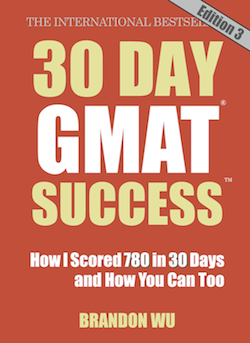Time is Ticking Away
If you have read my book, 30 Day GMAT Success, you already know that spending more time on the earlier questions is an important component of the strategy for earning a high score. You also know that reading comprehension takes longer than the other types of verbal questions do because you have to read not only questions and answers but also passages. Since spending more time on earlier questions means that you have less time for later questions, you may find yourself in the position of having to gloss over some of the later reading comprehension questions so that you don’t have any questions left unanswered when time runs out. Today we are going to look at a reading comprehension passage and discuss which questions are best to spend your precious last few minutes on.
Let’s use questions 128 through 133 (pages 414 –415) from the Official Guide, 13th Edition. You likely won’t have as many as six questions related to a single passage on your test, but let’s just say that these are questions 29 through 34 on your real GMAT. (Of course, you cannot really know how many questions come with a reading passage since you cannot skip around among questions and you only see one question at a time.)
That means you will have three questions remaining after you finish this passage and those are likely to be sentence correction or critical reasoning, topics on which you may perform much better. Let’s also assume you have only 14 minutes remaining, which gives you less than two minutes per question not to mention time for reading this complicated passage. Here is my recommended strategy.
Look at question 128. This question uses the words according to and contains lots of key words that explain the topic of the question. These are well-known plant hormones and growth of crops. Given how specific this question is, you should spend the time to scan the passage for those key words and you will very easily locate them in the first sentence of the second paragraph (lines 14 –17). This question can be answered quickly without reading the whole passage.
Now on to question 129. This question is also very specific and the answers are short, so it is probably worth your time even though it uses the word suggests which often indicates the question is a bit trickier. Scan the passage for the key words hypothalamic hormones and animals and you’ll find them in the first sentence of paragraph three.
Question 130 is one on which you might want to start thinking about guessing. We again see a key word, oligosaccharin, but this key word appears throughout the passage. In addition, the answer choices are long and the question uses the trickier word suggests. Give this question a quick shot, but keep your eye on the clock. Don’t spend more than 30 seconds because at this point, you still have 6 questions remaining and you are likely down to 11 minutes. This question is in fact very tricky, because the key word _oligosaccharin _appears most prominently in the final paragraph, which also talks a lot about cell walls. However, neither of the answers that talk about cell walls (Answers B and C) is correct. You can waste a lot of time on this question if you let yourself and then still get it wrong. Also, remember that it might be an experimental question and therefore not worth any points at all!
Question 131 is a why question, which we discussed in a previous blog post. Use the key word auxin to realize that you need to understand the main idea of the second paragraph. This is also a more difficult question, so keep your eye on the clock. Just take a guess if you can’t get the answer in 30 seconds to one minute.
Question 132 also uses the key word oligosaccharin _but unlike question 130, here we have a straightforward _according to question. This one is worth spending more time on because you have a better chance of getting it right. And if you are able to get this answer, you will also be more likely to get the answer to the last question, number 133. The answers to both of these questions relate to the fact that _oligosaccharins _have specific functions, as the text explains in lines 14 – 17 and lines 43 – 44. Ah, if only we could skip around among questions!
This passage had no main idea questions, but certainly towards the end of the test, any main idea questions should be glossed over. Try reading just the final paragraph to see if any of the answers reflect the ideas expressed there.
Just remember, you should never leave questions unanswered on the GMAT, so when you start running out of time, you need to know when to let go of a question and save your time to be better used elsewhere. You won’t feel comfortable doing so unless you practice, so get to it!
Image Courtesy of with Earls37a __Creative Commons License

